-
OpenHarmony 串口服务访问
项目介绍
本文档是在eTS项目hap包中实现串口访问的使用说明,通过JS接口开放给上层应用使用。
一、开发环境准备
安装OpenHarmony SDK
1. 在DevEco Studio菜单栏选择Tools->SDK Manager
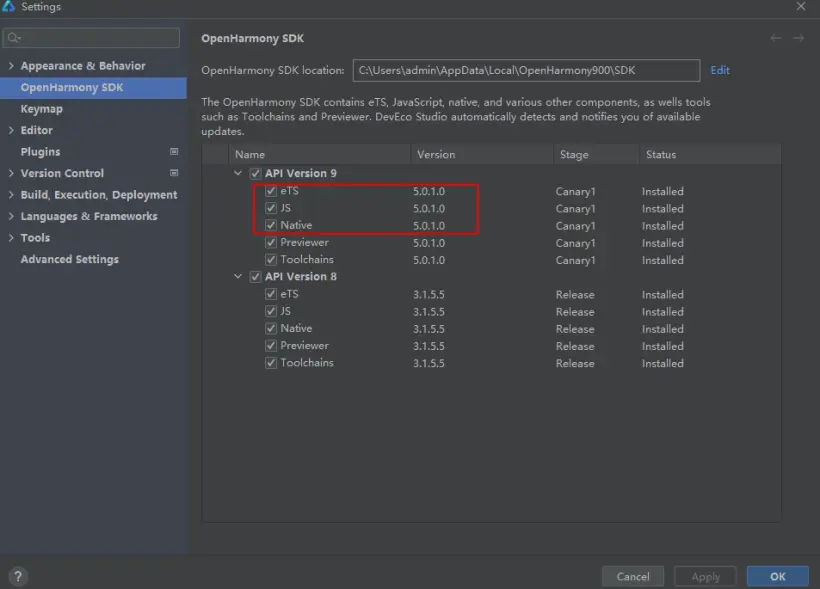
2. OpenHarmony SDK选项中选择配备API版本进行安装
二、创建eTS项目
创建支持Native C++的eTS项目
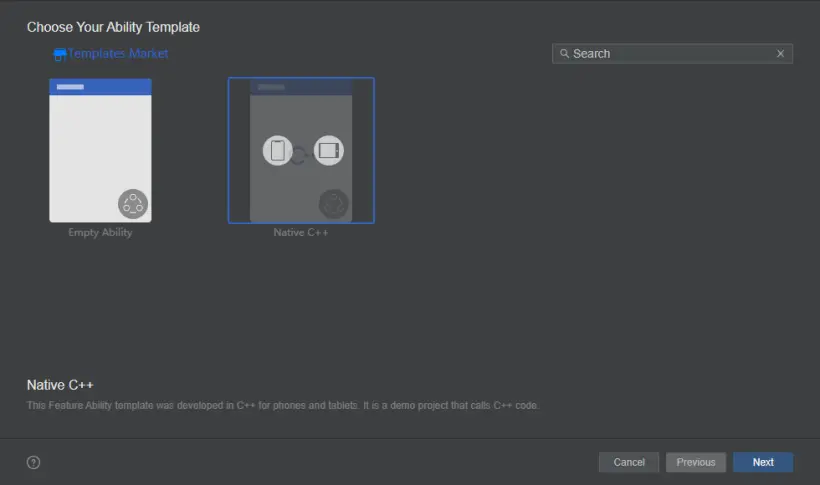
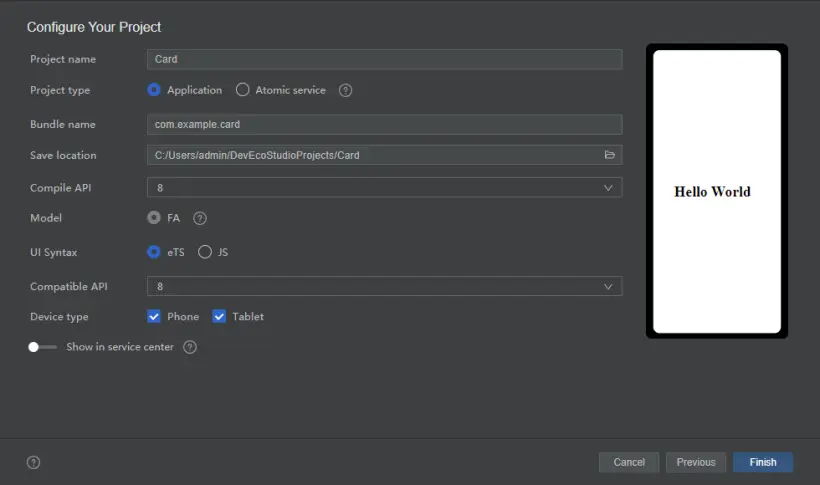
三、NAPI库相关
生成串口NAPI库
1. 添加文件src/main/cpp/types/libserialhelper/serialhelper.d.ts
/* * Copyright (C) 2021-2022 Huawei Device Co., Ltd. * Licensed under the Apache License, Version 2.0 (the "License"); * you may not use this file except in compliance with the License. * You may obtain a copy of the License at * * http://www.apache.org/licenses/LICENSE-2.0 * * Unless required by applicable law or agreed to in writing, software * distributed under the License is distributed on an "AS IS" BASIS, * WITHOUT WARRANTIES OR CONDITIONS OF ANY KIND, either express or implied. * See the License for the specific language governing permissions and * limitations under the License. */ import {AsyncCallback, Callback} from "basic"; declare namespace serialHelper { /** * Open serial port. * @param dev Indicates the serial port dev. */ function openSerial(dev:string, callback: AsyncCallback<void>): void; function openSerial(dev:string): Promise<void>; /** * Close serial port. * @param dev Indicates the serial port dev. */ function closeSerial(dev:string, callback: AsyncCallback<void>): void; function closeSerial(dev:string): Promise<void>; } export default serialHelper;- 1
- 2
- 3
- 4
- 5
- 6
- 7
- 8
- 9
- 10
- 11
- 12
- 13
- 14
- 15
- 16
- 17
- 18
- 19
- 20
- 21
- 22
- 23
- 24
- 25
- 26
- 27
- 28
- 29
- 30
- 31
- 32
- 33
2. 添加文件src/main/cpp/types/libserialhelper/package.json
{ "name": "libserialhelper.so", "types": "./serialhelper.d.ts" }- 1
- 2
- 3
- 4
- 5
3. 根据serialhelper.d.ts文件生成对应的c++源码
方式一:手动编写src/main/cpp/serial_helper.cpp
struct AsyncCallInfo{ napi_env env = nullptr; napi_ref callbackRef = nullptr; napi_deferred deferred = nullptr; napi_async_work work = nullptr; void *data = nullptr; }; static void AsyncCallFinish(AsyncCallInfo* asyncCallInfo, int32_t result, napi_value *asyncResult) { if (asyncCallInfo->deferred) { if (result == 0) { napi_resolve_deferred(asyncCallInfo->env, asyncCallInfo->deferred, asyncResult[1]==nullptr?asyncResult[0]:asyncResult[1]); } else { napi_reject_deferred(asyncCallInfo->env, asyncCallInfo->deferred, asyncResult[0]); } } else { napi_value callback = nullptr; napi_get_reference_value(asyncCallInfo->env, asyncCallInfo->callbackRef, &callback); napi_call_function(asyncCallInfo->env, nullptr, callback, CALLBACK_ARGV_CNT, asyncResult, nullptr); napi_delete_reference(asyncCallInfo->env, asyncCallInfo->callbackRef); } }- 1
- 2
- 3
- 4
- 5
- 6
- 7
- 8
- 9
- 10
- 11
- 12
- 13
- 14
- 15
- 16
- 17
- 18
- 19
- 20
- 21
- 22
- 23
- 24
static napi_value Call_OpenSerial(napi_env env, napi_callback_info info) { size_t argc = 0; napi_value args[DEFAULT_ARG_COUNT] = {0}; napi_get_cb_info(env, info, &argc, args , nullptr, nullptr); ... napi_value resourceName = nullptr; napi_create_string_utf8(env, "x_napi_tool", NAPI_AUTO_LENGTH, &resourceName); napi_create_async_work(env, nullptr, resourceName, [](napi_env env, void* data) { AsyncCallInfo* asyncCallInfo = (AsyncCallInfo*)data; OpenSerialValue* openValue = (OpenSerialValue*)asyncCallInfo->data; //openValue->out = SerialClient::GetInstance()->OpenSerial(openValue->dev); }, [](napi_env env, napi_status status, void* data) { AsyncCallInfo* asyncCallInfo = (AsyncCallInfo*)data; OpenSerialValue* openValue = (OpenSerialValue*)asyncCallInfo->data; napi_value asyncResult[CALLBACK_ARGV_CNT]={nullptr, nullptr}; napi_create_int32(env, openValue->out, &asyncResult[0]); AsyncCallFinish(asyncCallInfo, openValue->out,asyncResult); napi_delete_async_work(env, asyncCallInfo->work); delete openValue; delete asyncCallInfo; }, (void*)asyncCallInfo, &asyncCallInfo->work); napi_queue_async_work(env, asyncCallInfo->work); return retValue; }- 1
- 2
- 3
- 4
- 5
- 6
- 7
- 8
- 9
- 10
- 11
- 12
- 13
- 14
- 15
- 16
- 17
- 18
- 19
- 20
- 21
- 22
- 23
- 24
- 25
- 26
- 27
- 28
- 29
方式二:使用NAPI框架生成工具生成 工具链接
1)将serialhelper.d.ts、basic.d.ts复制到同一目录中,创建out目录
2)执行./napi_generator-linux -f serialhelper.d.ts -o out
3)将生成的源码文件复制到src/main/cpp
4. make文件:src/main/cpp/CMakeList.txt
# the minimum version of CMake. cmake_minimum_required(VERSION 3.4.1) project(XComponent) set(NATIVERENDER_ROOT_PATH ${CMAKE_CURRENT_SOURCE_DIR}) include_directories(${NATIVERENDER_ROOT_PATH}) add_library(serialhelper SHARED serial_helper.cpp) target_link_libraries(serialhelper PUBLIC libace_napi.z.so libc++.a)- 1
- 2
- 3
- 4
- 5
- 6
- 7
- 8
- 9
- 10
5. 添加项目依赖
entry/package.json
"devDependencies": { "@types/libserialhelper.so": "file:./src/main/cpp/types/libserialhelper" }- 1
- 2
- 3
- 4
entry/package-lock.json
"dependencies": { "@types/libserialhelper.so": { "version": "file:src/main/cpp/types/libserialhelper", "dev": true } }- 1
- 2
- 3
- 4
- 5
- 6
- 7
6. 编译生成
修改编译项entry/build-profile.json5:
"buildOption": { "externalNativeOptions": { "path": "./src/main/cpp/CMakeLists.txt", "arguments": "-v -DOHOS_STL=c++_shared", "abiFilters": [ "armeabi-v7a", ], "cppFlags": "", } }- 1
- 2
- 3
- 4
- 5
- 6
- 7
- 8
- 9
- 10
- 11
四、实现串口异步回调
添加串口IPC客户端libserialport_service_api.z.so库,并且实现具体的异步回调功能
-
将libserialport_service_api.z.so复制到entry/libs/armeabi-a7v目录
-
将库的头文件复制到entry/src/main/cpp/include目录
-
继承SerialCallbackBase类,实现串口数据异步回调SerialAsyncCallback
class SerialAsyncCallback: public SerialCallbackBase { public: SerialAsyncCallback() = default; ~SerialAsyncCallback(); // 通知回调事件 void OnCallBackEvent() override; // 接收到串口数据 void OnRecvData(const uint8_t *buffer, uint32_t length) override; ... };- 1
- 2
- 3
- 4
- 5
- 6
- 7
- 8
- 9
- 10
- 11
- 12
-
修改src/main/cpp/CMakeList.txt文件
# the minimum version of CMake. cmake_minimum_required(VERSION 3.4.1) project(XComponent) set(NATIVERENDER_ROOT_PATH ${CMAKE_CURRENT_SOURCE_DIR}) include_directories(${NATIVERENDER_ROOT_PATH} ${NATIVERENDER_ROOT_PATH}/include ) link_directories(${NATIVERENDER_ROOT_PATH}/../../../libs/${CMAKE_OHOS_ARCH_ABI}) add_library(serialhelper SHARED serial_helper.cpp x_napi_tool.cpp serial_async_callback.cpp) target_link_libraries(serialhelper PUBLIC libace_napi.z.so libc++.a libhilog_ndk.z.so libuv.so libserialport_service_api.z.so)- 1
- 2
- 3
- 4
- 5
- 6
- 7
- 8
- 9
- 10
- 11
- 12
- 13
- 14
-
在napi函数中调用api函数,使用NAPI框架生成工具生成OpenSerial代码,如下:
struct OpenSerial_value_struct { std::string in0; int32_t out; }; void OpenSerial_execute(XNapiTool *pxt, void *data) { OpenSerial_value_struct *vio = (OpenSerial_value_struct *)data; vio->out = get_serial_client()->OpenSerial(vio->in0); } void OpenSerial_complete(XNapiTool *pxt, void *data) { OpenSerial_value_struct *vio = (OpenSerial_value_struct *)data; napi_value result = nullptr; result = NUMBER_C_2_JS(pxt, Int32, vio->out); { napi_value args[XNapiTool::ARGV_CNT] = {result, nullptr}; pxt->FinishAsync(vio->out, args); } delete vio; } napi_value OpenSerial_middle(napi_env env, napi_callback_info info) { XNapiTool *pxt = std::make_unique<XNapiTool>(env, info).release(); if (pxt->IsFailed()) { napi_value err = pxt->GetError(); delete pxt; return err; } struct OpenSerial_value_struct *vio = new OpenSerial_value_struct(); pxt->SwapJs2CUtf8(pxt->GetArgv(0), vio->in0); napi_value result = pxt->StartAsync(OpenSerial_execute, vio, OpenSerial_complete, pxt->GetArgc() == 2 ? pxt->GetArgv(1) : nullptr); if (pxt->IsFailed()) { result = pxt->GetError(); } return result; }- 1
- 2
- 3
- 4
- 5
- 6
- 7
- 8
- 9
- 10
- 11
- 12
- 13
- 14
- 15
- 16
- 17
- 18
- 19
- 20
- 21
- 22
- 23
- 24
- 25
- 26
- 27
- 28
- 29
- 30
- 31
- 32
- 33
- 34
- 35
- 36
- 37
- 38
- 39
- 40
- 41
-
模块注册
static napi_value init(napi_env env, napi_value exports) { std::shared_ptr<XNapiTool> pxt = std::make_shared<XNapiTool>(env, exports); //js函数与C++函数映射 pxt->DefineFunction("setOptions", OHOS::SerialPort::SetOptions_middle); pxt->DefineFunction("openSerial", OHOS::SerialPort::OpenSerial_middle); pxt->DefineFunction("closeSerial", OHOS::SerialPort::CloseSerial_middle); pxt->DefineFunction("clearBuffer", OHOS::SerialPort::ClearBuffer_middle); pxt->DefineFunction("sendData", OHOS::SerialPort::SendData_middle); pxt->DefineFunction("recvData", OHOS::SerialPort::RecvData_middle); pxt->DefineFunction("transmit", OHOS::SerialPort::Transmit_middle); pxt->DefineFunction("on", OHOS::SerialPort::on_middle); pxt->DefineFunction("off", OHOS::SerialPort::off_middle); pxt->DefineFunction("setGPIODirection", OHOS::SerialPort::setGPIODirection_middle); pxt->DefineFunction("setGPIOValue", OHOS::SerialPort::setGPIOValue_middle); pxt->DefineFunction("getGPIOValue", OHOS::SerialPort::getGPIOValue_middle); return exports; } static napi_module g_serialHelper_Module = { .nm_version = 1, .nm_flags = 0, .nm_filename = nullptr, .nm_register_func = init, .nm_modname = "serialhelper", .nm_priv = ((void *)0), .reserved = {(void *)0}, }; extern "C" __attribute__((constructor)) void Register_serialHelper_Module(void) { napi_module_register(&g_serialHelper_Module); }- 1
- 2
- 3
- 4
- 5
- 6
- 7
- 8
- 9
- 10
- 11
- 12
- 13
- 14
- 15
- 16
- 17
- 18
- 19
- 20
- 21
- 22
- 23
- 24
- 25
- 26
- 27
- 28
- 29
- 30
- 31
- 32
- 33
- 34
-
eTS调用接口验证
import serialHelper from "libserialhelper.so" ... //打开串口this.tty /dev/ttyXRUSB0 serialHelper.openSerial(this.tty).then(()=>{ HiLog.i(TAG, "serial openSerial " + this.tty + " success") this.status = '开' }).catch((error)=> { HiLog.i(TAG, "openSerial " + this.tty + " failed:" + error) }); ... //设置为异步 serialHelper.on("/dev/ttyXRUSB0", (data) => { var dataString = ""; for (var i = 0; i < data.length; i++) { dataString += String.fromCharCode(data[i]); } HiLog.i(TAG, "ttyXRUSB0 len:" + data.length + " data:" + dataString); })- 1
- 2
- 3
- 4
- 5
- 6
- 7
- 8
- 9
- 10
- 11
- 12
- 13
- 14
- 15
- 16
- 17
- 18
- 19
应用启动后点击"打开/dev/ttyXRUSB0"按钮查看输出日志,出现serialport_client与serial_service_impl标志,表示访问串口服务成功
为了能让大家更好的学习鸿蒙(HarmonyOS NEXT)开发技术,这边特意整理了《鸿蒙开发学习手册》(共计890页),希望对大家有所帮助:
https://qr21.cn/FV7h05《鸿蒙开发学习手册》:
入门必看:
https://qr21.cn/FV7h05- 应用开发导读(ArkTS)
- ……
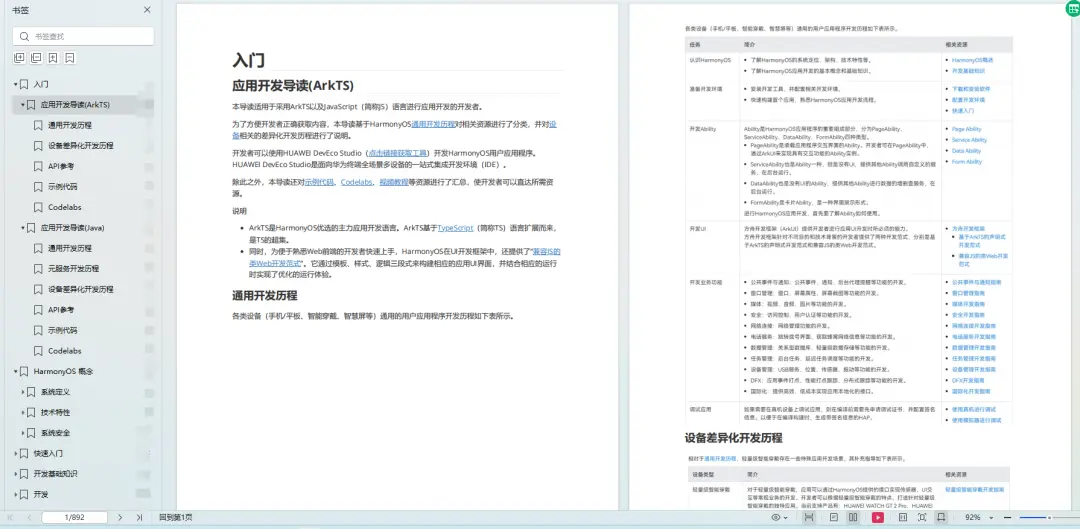
HarmonyOS 概念:
https://qr21.cn/FV7h05- 系统定义
- 技术架构
- 技术特性
- 系统安全
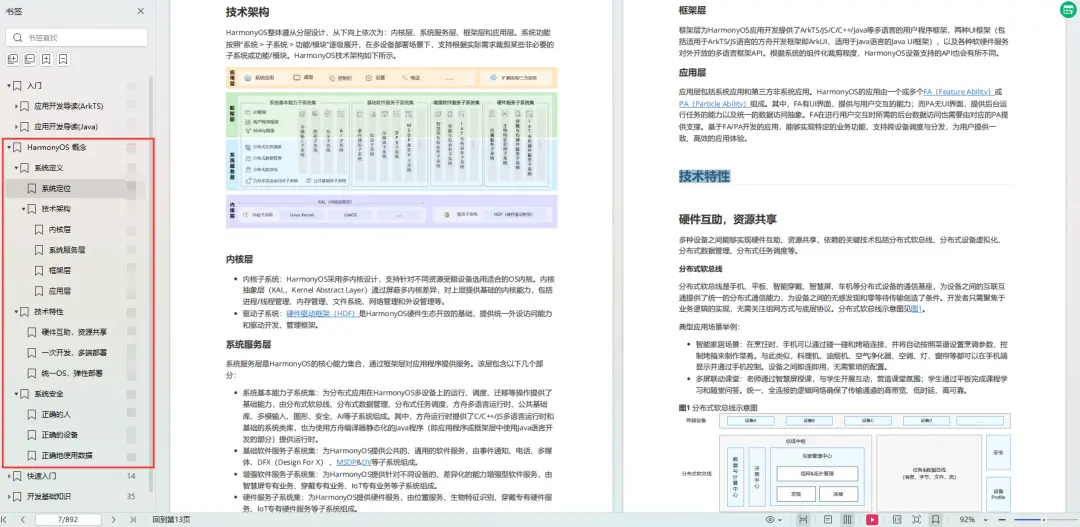
如何快速入门?:
https://qr21.cn/FV7h05- 基本概念
- 构建第一个ArkTS应用
- 构建第一个JS应用
- ……

开发基础知识:
https://qr21.cn/FV7h05- 应用基础知识
- 配置文件
- 应用数据管理
- 应用安全管理
- 应用隐私保护
- 三方应用调用管控机制
- 资源分类与访问
- 学习ArkTS语言
- ……
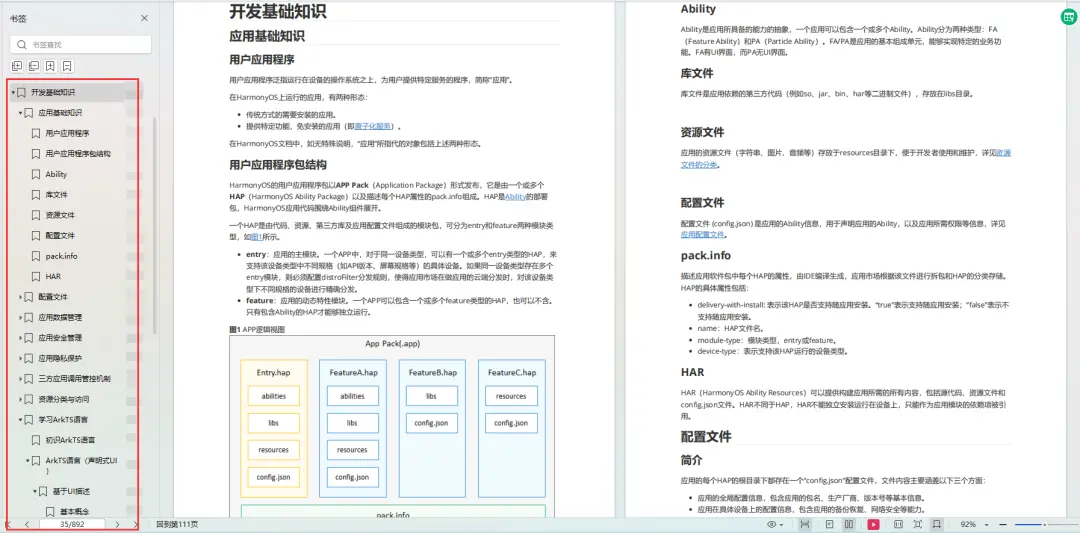
基于ArkTS 开发:
https://qr21.cn/FV7h051.Ability开发
2.UI开发
3.公共事件与通知
4.窗口管理
5.媒体
6.安全
7.网络与链接
8.电话服务
9.数据管理
10.后台任务(Background Task)管理
11.设备管理
12.设备使用信息统计
13.DFX
14.国际化开发
15.折叠屏系列
16.……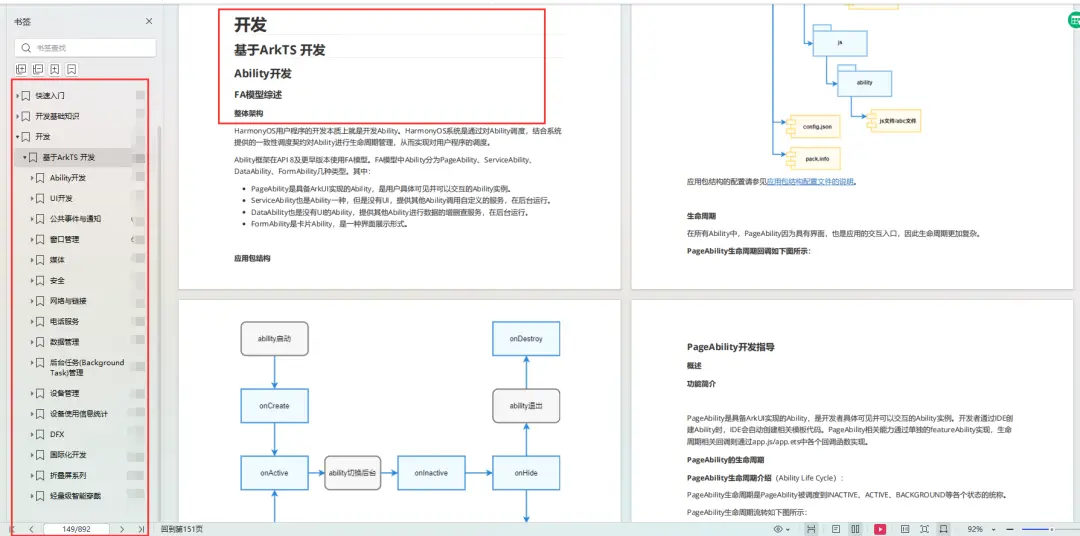
-
相关阅读:
从零开始训练神经网络【学习笔记】[2/2]
ssh连接腾讯云服务器
【C++】C++ 语言对 C 语言的加强 ② ( 变量检测增强 - C++ 不允许重复定义变量 | struct 关键字增强 - struct 作用等同于 class )
109. 有序链表转换二叉搜索树
程序员工作5年,还是个中级程序员,如何再快速晋升?
【servelt原理_4_Http协议】
ts重点学习138-ts.config.json笔记
【Maven】jar包冲突原因与最优解决方案
谈基于大语言模型的图数据库路径检索
结合Mockjs与Bus事件总线搭建首页导航和左侧菜单
- 原文地址:https://blog.csdn.net/weixin_61845324/article/details/136254407
